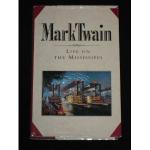But I wander from my theme. St. Paul is a wonderful town. It is put together in solid blocks of honest brick and stone, and has the air of intending to stay. Its post-office was established thirty-six years ago; and by and by, when the postmaster received a letter, he carried it to Washington, horseback, to inquire what was to be done with it. Such is the legend. Two frame houses were built that year, and several persons were added to the population. A recent number of the leading St. Paul paper, the ‘Pioneer Press,’ gives some statistics which furnish a vivid contrast to that old state of things, to wit: Population, autumn of the present year (1882), 71,000; number of letters handled, first half of the year, 1,209,387; number of houses built during three-quarters of the year, 989; their cost, $3,186,000. The increase of letters over the corresponding six months of last year was fifty per cent. Last year the new buildings added to the city cost above $4,500,000. St. Paul’s strength lies in her commerce—I mean his commerce. He is a manufacturing city, of course—all the cities of that region are—but he is peculiarly strong in the matter of commerce. Last year his jobbing trade amounted to upwards of $52,000,000.
He has a custom-house, and is building a costly capitol to replace the one recently burned—for he is the capital of the State. He has churches without end; and not the cheap poor kind, but the kind that the rich Protestant puts up, the kind that the poor Irish ‘hired-girl’ delights to erect. What a passion for building majestic churches the Irish hired-girl has. It is a fine thing for our architecture but too often we enjoy her stately fanes without giving her a grateful thought. In fact, instead of reflecting that ’every brick and every stone in this beautiful edifice represents an ache or a pain, and a handful of sweat, and hours of heavy fatigue, contributed by the back and forehead and bones of poverty,’ it is our habit to forget these things entirely, and merely glorify the mighty temple itself, without vouchsafing one praiseful thought to its humble builder, whose rich heart and withered purse it symbolizes.
This is a land of libraries and schools. St. Paul has three public libraries, and they contain, in the aggregate, some forty thousand books. He has one hundred and sixteen school-houses, and pays out more than seventy thousand dollars a year in teachers’ salaries.
There is an unusually fine railway station; so large is it, in fact, that it seemed somewhat overdone, in the matter of size, at first; but at the end of a few months it was perceived that the mistake was distinctly the other way. The error is to be corrected.
The town stands on high ground; it is about seven hundred feet above the sea level. It is so high that a wide view of river and lowland is offered from its streets.
It is a very wonderful town indeed, and is not finished yet. All the streets are obstructed with building material, and this is being compacted into houses as fast as possible, to make room for more—for other people are anxious to build, as soon as they can get the use of the streets to pile up their bricks and stuff in.




